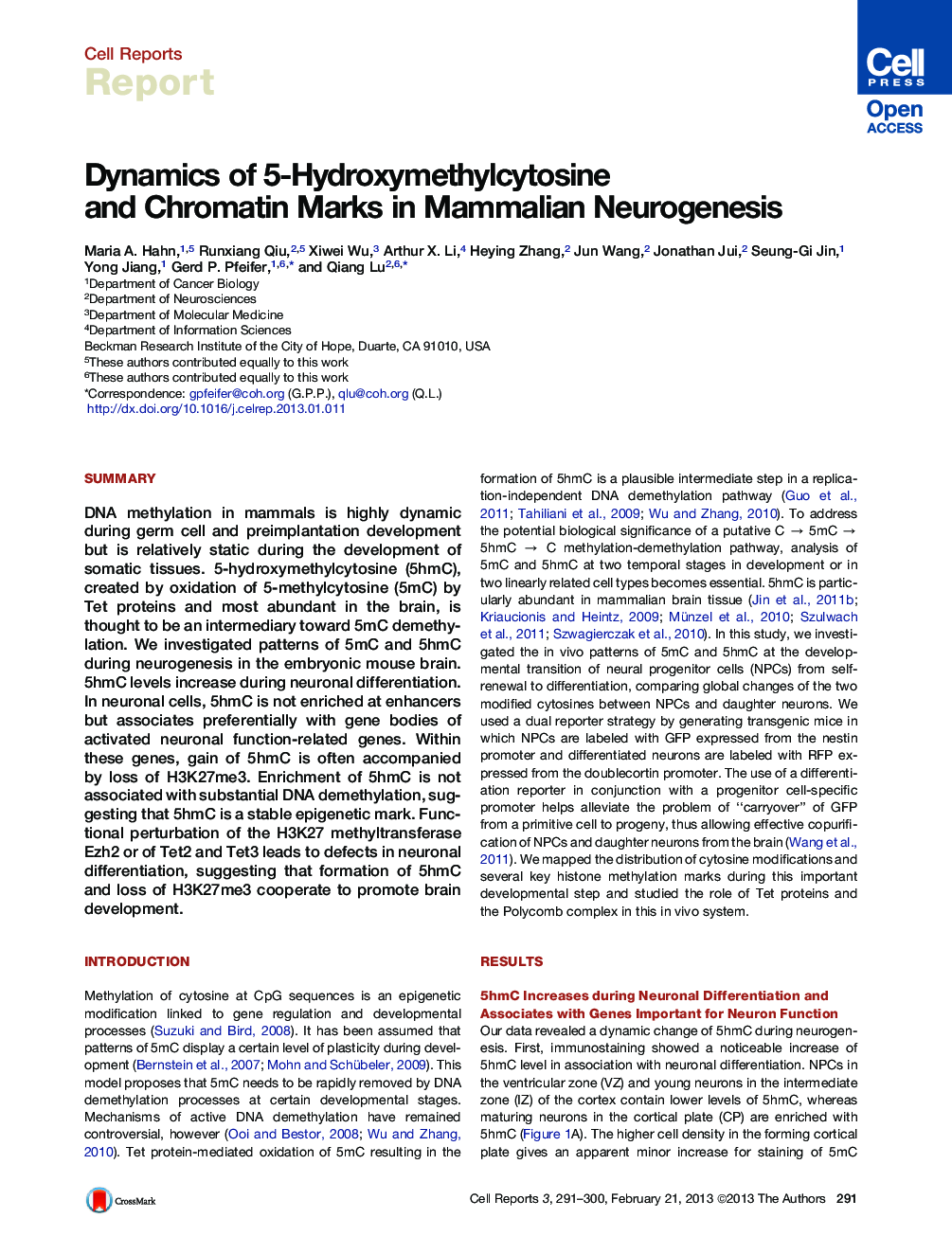| Article ID | Journal | Published Year | Pages | File Type |
|---|---|---|---|---|
| 2042171 | Cell Reports | 2013 | 10 Pages |
SummaryDNA methylation in mammals is highly dynamic during germ cell and preimplantation development but is relatively static during the development of somatic tissues. 5-hydroxymethylcytosine (5hmC), created by oxidation of 5-methylcytosine (5mC) by Tet proteins and most abundant in the brain, is thought to be an intermediary toward 5mC demethylation. We investigated patterns of 5mC and 5hmC during neurogenesis in the embryonic mouse brain. 5hmC levels increase during neuronal differentiation. In neuronal cells, 5hmC is not enriched at enhancers but associates preferentially with gene bodies of activated neuronal function-related genes. Within these genes, gain of 5hmC is often accompanied by loss of H3K27me3. Enrichment of 5hmC is not associated with substantial DNA demethylation, suggesting that 5hmC is a stable epigenetic mark. Functional perturbation of the H3K27 methyltransferase Ezh2 or of Tet2 and Tet3 leads to defects in neuronal differentiation, suggesting that formation of 5hmC and loss of H3K27me3 cooperate to promote brain development.
Graphical AbstractFigure optionsDownload full-size imageDownload as PowerPoint slideHighlights► 5hmC levels increase in neuronal function-related genes during neurogenesis ► 5hmC gain is accompanied by H3K27me3 loss at promoters and gene bodies ► Gain of 5hmC is not associated with substantial DNA demethylation ► Polycomb and Tet protein together promote proper progression of neurogenesis
